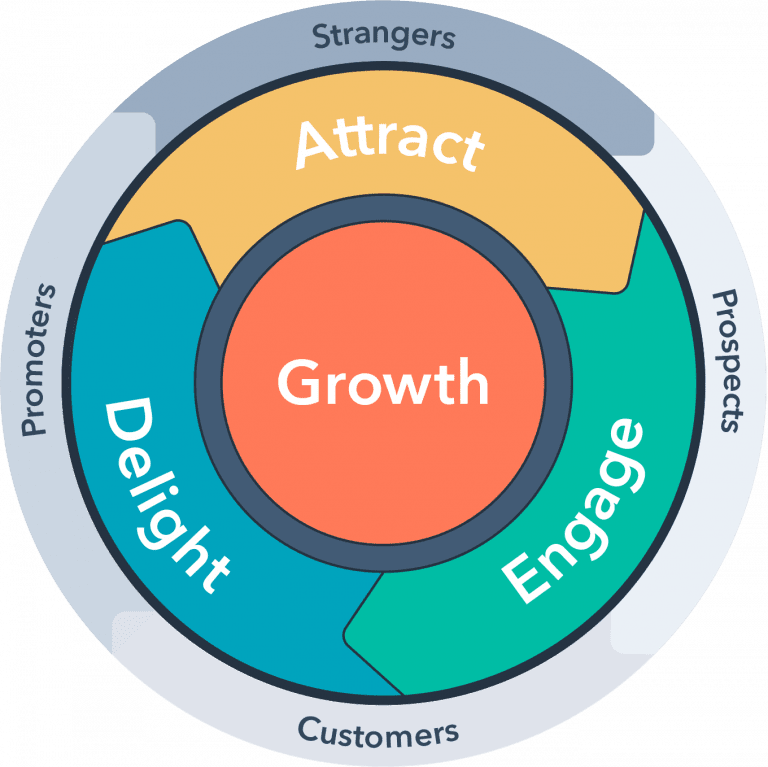Mel is our Partner Strategy & Delivery Manager and also a CIM Chartered Marketer, a testament to her commitment to excellence in the field. But Mel’s contributions don’t stop at the office door. Beyond her professional endeavours, she leads an active life as a qualified run leader and dedicated volunteer. Her experience in these roles has streamlined her leadership and teamwork skills, making her an invaluable asset when it comes to collaborating on projects and ensuring their success. Her sharp insights, strategic thinking, and knowledge have made her a backbone in our team’s ability to drive results for clients in this industry. Mel will make sure that we can approach marketing challenges from all angles and deliver outstanding results for our clients.
Posted on 29/01/2021 by Melanie Comerford
Moving From The Marketing Funnel to The Flywheel
As a marketer, you’ll be aware of the monumental changes to consumer behaviour that occur year on year. Our industry is continually adapting its practices to align with how we can best captivate the attention and engagement of our audiences in a crowded digital marketplace. Moving away from the traditional funnel and adopting the modern marketing flywheel is a great step to ensuring you can create relationships with your customers for the long-term and promote optimal growth for your business.
What is a Marketing Funnel?
The marketing funnel has been around for some time, undergoing tweaks over the years but largely the basic premise has remained the same. The funnel is a classic tool that represents the stages that a customer goes throughout their buying journey commonly devised as the following – awareness, consideration, and conversion.
The awareness stage at the top of the funnel is wide and aims to generate (you guessed it) awareness, for your brand, products, or services. Aiming to attract the attention of as many prospects as possible, some of which may have no interest in what you have to offer to them.
As the funnel narrows, leads pass through to the consideration stage with only a small percentage making it as far as the bottom, taking that much-desired action. The funnel, however, holds a fatal flaw, it doesn’t consider the huge influence customer referrals and word-of-mouth have on purchasing decisions and ultimately business growth. Due to this, the funnel remains in a debate on whether or not this tool we are all familiar with, is still a good representation of a modern-day buying journey.
What is a Marketing Flywheel?
Enter the Flywheel… HubSpot, the US marketing, sales and service software provider, took inspiration from Amazon’s flywheel business model – the Bezos’ Virtuous Cycle. HubSpot adapted the flywheel to explain the momentum you gain when you align your entire business to delivering remarkable customer experiences. Pioneered by James Watt over 200 years ago in the steam engine, the flywheel is quite simply a wheel that is incredibly energy efficient.
Modern-day customers are switched on and have high expectations of what your business can deliver to them. The flywheel puts your customer at the centre of the wheel.
The flywheel itself is divided into three parts each, similarly with the funnel, represent a different stage of the buying journey. Attract, Engage, Delight – running successfully, prospects will evolve into leads and leads into customers throughout the cycle. A key difference for this marketing model is that the customers in the ‘Delight’ phase feed-back into the ‘Attract’ phase. This model acknowledges the fact that happy or delighted customers are likely to recommend your brand or business to their network and encourage others to gain interest in your business.
Let’s take a more detailed look at the flywheel:
Attract
In this phase, you’re looking to draw in prospects. These users are likely to be engaging with your business and brand for the first time, and as you well know, first impressions are very important. They will likely have a problem or will be expressing symptoms of a problem; they’ll be searching for a diagnosis. At this stage, it would be appropriate to provide content that explains their problem in further detail, content that provides clarity and sympathises with the prospect. If you show your prospect that you understand and care about their challenges, you’ll begin to build trust with them.
Engage
This is where you can begin to introduce solutions and insights to their problem. When describing these solutions, you can start to include references to your own products and services and discuss how it’ll bring further value to them. When referring to the value of your brand or business don’t go overboard, you don’t want your readers, viewers, or listeners to feel like they’re being sold to. Instead, maintain a focus on solution selling rather than product selling, remember you want your prospects and leads to feel empowered.
Delight
This is where your existing customers will sit. To delight a customer, you want to ensure your customers feel happy, satisfied, and supported long after their initial purchase. Remember it’s far more expensive to attract a new customer than to retain an existing one. You’ll need to provide advice and expert knowledge to your customers when one reaches out. By continually delighting your customers you’re more likely to turn them into brand advocates or promoters. These promoters could recommend your business to others or publish a review online, this may spark the interest of another prospect and the cycle begins again.
Why move from the Funnel to the Flywheel?
The marketing funnel, as pointed out previously, has become a staple tool in our industry and many businesses have structured their strategies around the funnel for many years. This model works, it can produce customers for your business, but it doesn’t acknowledge how those customers can help your business grow. Whereas the flywheel views customers as a driving force for growth, not just an afterthought. This newer model is much more comprehensive and perfectly represents the forces (attract, engage, delight) that affect your business’s growth.
Studies show that 57% of B2B purchase processes are completed before buyers ever reach out to suppliers or vendors. Modern buyers look to reviews, recommendations and their network to influence their purchase decision. Making it so much more important to ensure your customers have good experiences, recommend others, and ultimately keep the flywheel spinning. On the contrary, the funnel model is more orientated to securing one-time buyers.
Well, when you start to envision your business as flywheel instead of a funnel you begin to make unique decisions and adjust your overall approach to sales, marketing, and service particularly when paired with an inbound approach. HubSpot believe so strongly in their flywheel that they redesigned their inbound methodology to work harmoniously with the flywheel.
Can I still use a Marketing Funnel?
Of course! We know that funnel models still serve great purposes across a variety of businesses, sectors, and industries. The flywheel is simply just a better and wider representation of how today’s businesses can grow. You may still choose to use funnels to measure the success of other processes within your company, all of which will contribute to your larger flywheel.
How can we help?
We’re continually updating our practices and processes to ensure the best possible results for our client-partners. We know that in our industry, nothing stands still. Our continual development means our partners in the best possible hands. If you’d like to discuss your transition to the flywheel and wider inbound marketing approach, get in touch with our team today. We’d be happy to discuss your future plans and how we can help to grow your business.
Looking for your next opportunity?
Digital marketing careers
We’re always on the lookout for talented individuals to join our ever growing team. If you think you’d be a great match for Loop Digital, we’d love to hear from you.

Join 300+ business owners getting weekly growth strategies - subscribe now.
"*" indicates required fields








